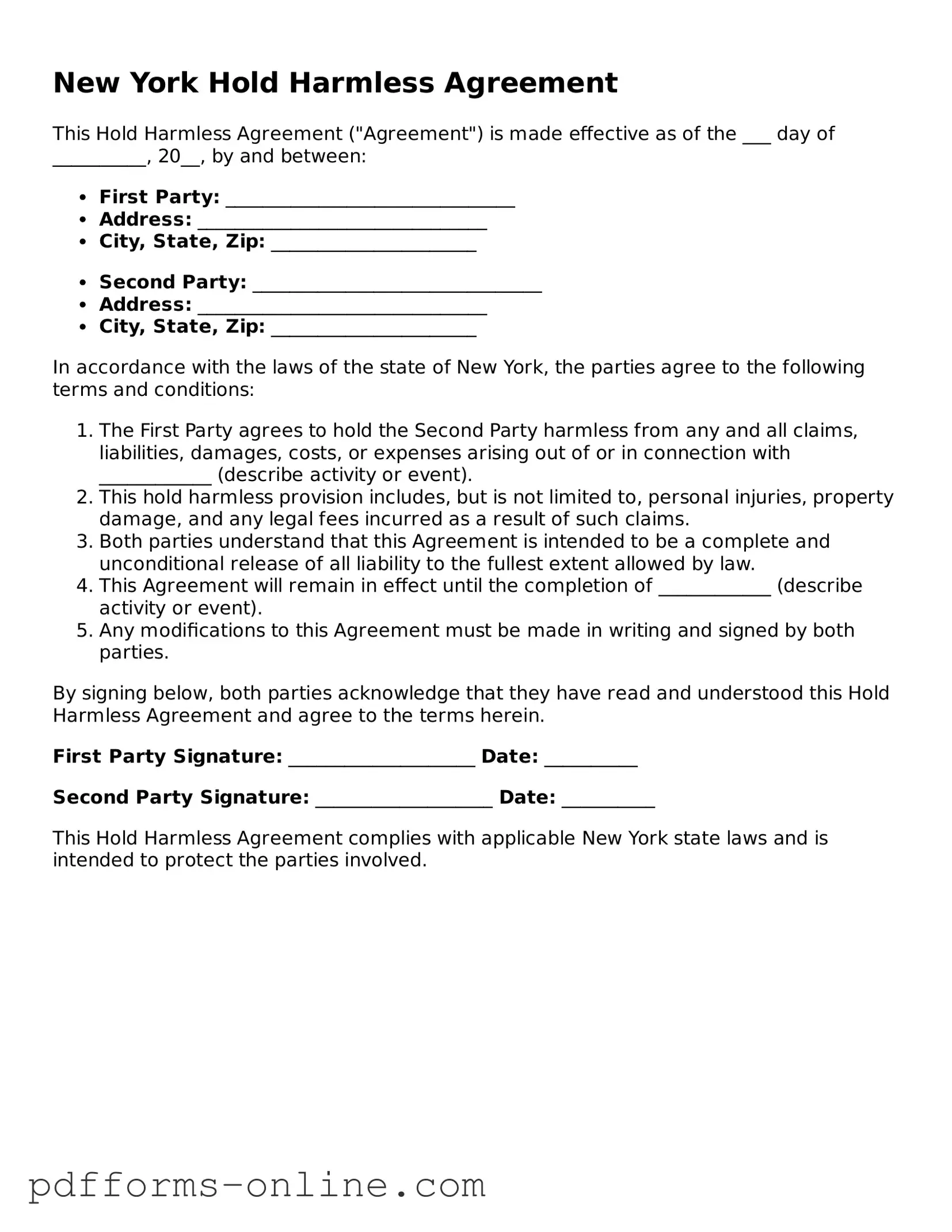New York Hold Harmless Agreement
This Hold Harmless Agreement ("Agreement") is made effective as of the ___ day of __________, 20__, by and between:
- First Party: _______________________________
- Address: _______________________________
- City, State, Zip: ______________________
- Second Party: _______________________________
- Address: _______________________________
- City, State, Zip: ______________________
In accordance with the laws of the state of New York, the parties agree to the following terms and conditions:
- The First Party agrees to hold the Second Party harmless from any and all claims, liabilities, damages, costs, or expenses arising out of or in connection with ____________ (describe activity or event).
- This hold harmless provision includes, but is not limited to, personal injuries, property damage, and any legal fees incurred as a result of such claims.
- Both parties understand that this Agreement is intended to be a complete and unconditional release of all liability to the fullest extent allowed by law.
- This Agreement will remain in effect until the completion of ____________ (describe activity or event).
- Any modifications to this Agreement must be made in writing and signed by both parties.
By signing below, both parties acknowledge that they have read and understood this Hold Harmless Agreement and agree to the terms herein.
First Party Signature: ____________________ Date: __________
Second Party Signature: ___________________ Date: __________
This Hold Harmless Agreement complies with applicable New York state laws and is intended to protect the parties involved.
